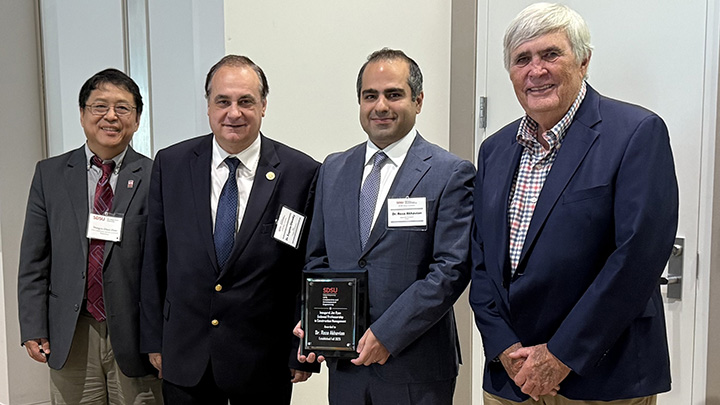Uprooting Math Anxiety
Melissa Soto says there's more to math than speed and accuracy.

“When we focus on speed, we don’t allow students to reason through a problem. We take away the struggle.”
This story appears in the spring 2015 issue of 360:The Magazine of San Diego State University.
Quick: What’s the square root of 49 divided by 3? If simply reading that sentence brought on a faint tremble of nervousness, you’re not alone. Math anxiety weighs heavy on the minds of many young students, and that unease frequently carries over into adulthood.
“It’s really sad to hear kids and even adults say, ‘I’m not good at math,’” said Melissa Soto, assistant professor of mathematics education at San Diego State University. “Kids start off excited about math, but by the third or fourth grade, they get more timid about it.”
Keeping kids interested in — or at least unafraid of — math is the goal of Soto’s research into a teaching method called Cognitively Guided Instruction. To understand what that is, it’s important to first understand what it’s not. For most kids, Soto said, early math classes have focused on getting kids to give the correct answer as fast as possible. Think timed quizzes and fast-as-you-can multiplication table tests. These inspire rote memorization and anxiety more than they do actual learning, she explained.
“There’s more to math than speed and accuracy,” Soto said.
Soto’s preferred approach is based on the principle that students solve math problems and make errors in predictable ways. Understanding the cognitive impulses that drive students’ forays into mathematics can help teachers identify red flags and rectify misunderstandings.
A major component to this approach is giving students the time and opportunity to discover solutions for themselves. Consider “borrowing” in multi-digit subtraction. It’s a nifty shortcut to solving subtraction problems, but if students don’t understand the concept behind it, they’ll struggle when it comes to more advanced notation.
“When we focus on speed, we don’t allow students to reason through a problem,” Soto said. “We take away the struggle.”
One simple yet effective trick to jumpstart mathematical reasoning, she said, is to personalize the context, such as including students’ names in story problems. Once they can visualize themselves in the scenario, they’re better able to reason through it.
Also, sharing information is frequently called out as cheating in classrooms, but it’s a crucial way students learn from one another and solidify their own understanding of math concepts, Soto said. Group work should be encouraged, not penalized.
Slowing down isn’t an easy directive to follow for already harried teachers, but Soto said it’s worth it.
“Teaching kids to be more flexible and sophisticated in their mathematical thinking will pay off in the long run,” she said.
Thanks to the SDSU Children's Center for help in the video component of this story.



